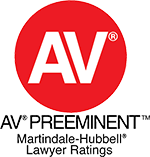CRIMINAL DEFENSE WITNESS INTERVIEWS & STATEMENTS
Whenever appropriate, we assign a private investigator to your case. Often you will want to have your own private cops to dig up evidence in your favor. The state has theirs, why shouldn’t you have yours?
Interviewing witnesses, assessing their credibility, presentation, and impression, and taking their statements is an extremely important function of the criminal defense investigator and should be accomplished as soon as possible after review of all file and discovery materials. Most of the defense investigator’s time will be consumed by this phase of any investigation, which, arguably, is the most important phase. Preparation is the key to a successful witness interview and statement, so make it a point to adequately prepare prior to the interview. Anyone with any knowledge of the incident, the defendant, and the victim(s) should be considered possible witnesses, including police personnel who may have responded to the scene and conducted the investigation. Medical personnel who responded to the scene and anyone who subsequently rendered medical care to the victim(s) and the defendant should also be considered possible witnesses. Family members of the victim(s) and the defendant are also potential witnesses; but remember, both families are usually upset and emotional so be empathetic and polite, yet professional.
Review and Preparation
A complete list of witnesses should be made containing all their personal and statistical data, their role in the investigation and a brief description of what they did, who they were with, and what they allegedly observed (be sure to include time lines). This witness sheet should be supplemented and updated as the investigation progresses. The list will aid the defense investigator when conducting the investigation, providing updates to the attorney-client, and preparing for trial. A witness evaluation sheet should be prepared for each and every witness which provides detailed statistical information; social, educational, employment, Criminal, medical, driving, and military background information; personal appearance and credibility assessments; and the gist of what they said to the defense investigator.
If there were eyewitnesses to the incident, they are to be considered key witnesses. Keep in mind that not all eyewitnesses may have been interviewed and/or statementized by the investigating authorities. If this is the case, they must be identified and located, as well as other witnesses, and interviewed. Identification of witnesses can be determined from information contained in the discovery materials, news media accounts, from reporter’s notes, through scene area canvasses, by surveillance at or near the scene at roughly the same time of day the incident occurred, and through interviews with witnesses that have already been identified.
Prior Statements
The defense investigator should have a definite systematic approach and theory to interviewing any witness, especially eyewitnesses, having knowledge about the incident and have provided statements to the police. The most popular theory and rule of thumb is not to interview/statementize a witness that has provided a statement to the police until their police statement(s) has been obtained, reviewed, compared with other statements, highlighted and outlined for inconsistencies, and the observations of the witness contained within the statement have been analyzed with information extracted from the discovery materials, scene investigation, and physical evidence gathered. Do everything necessary to follow the rule, but in some cases it will not be practical or expedient to do so. In those cases, discuss the matter with defense counsel before any contact is made. Be sure to remember that the defense investigator must always keep in mind the legal elements of the charges and the conditions that must be met by the prosecution in order to satisfy the elements when conducting file reviews prior to interviewing witnesses.
Never assume that the information contained within an existing witness statement taken by police personnel is totally accurate, particularly if the statement is not signed. Most often, these statements have been reduced to typewritten, question and answer or narrative form and are usually done by the police investigator. They almost never contain the exact words of the witness and are sometimes highly suggestive. Audio recorded statements of witnesses by police is not standard practice, but don’t rule it out; if they do exist, get copies of the tapes themselves and have them transcribed, if necessary, after listening to the statement. It has been the experience of many criminal defense investigators that witnesses seldom read the entire police authored witness statement, if at all, that they are requested to sign after it has been produced. Even though the statement might indicate that the witness read the statement and it is true and correct, don’t assume they read it. Witnesses, especially eyewitnesses, are oftentimes very tired and emotionally and physically drained from the sequence of events they have experienced and can’t wait to leave the police station where witness statements are usually taken. The point is to always be aware of these potential problems in police authored witness statements and to question the witness with regard to the accuracy of the original statement as to whether or not it is completely true, half true, or not at all true; or is it the author’s own statement of what they wanted the witness to say? Stay alert to this because a potentially damaging statement may be ruled to be spoiled and therefore unusable for impeachment purposes for any one of the above reasons.
Witness Contact
When the defense investigator is prepared to meet and interview the witness, serious consideration should be given as to the venue. It is almost always better for the witness to be interviewed out of his or her own environment and surroundings. The criminal scene is the best location to conduct the interview if it is available, accessible, and provides an environment free from any major distractions. But many times it is not. If the scene is not a likely location to conduct the interview, make every attempt to bring the witness into the defense investigators or a neutral environment. If the witness is reluctant to provide an interview at any other location other than their home or workplace, by all means assent to their request. Don’t do anything that will agitate the witness and thereby decrease the odds of establishing a friendly rapport. In fact, when initial contact has been made with the witness, the defense investigator should be friendly yet professional and show a sincere interest in the witness and the witness s family, house, occupation and employer, hobbies, etc….. Additionally, provide the witness with full identification and a business card.
Treat all witnesses with respect no matter what the circumstance; don’t talk down to them; educate them about the situation within reasonable bounds, disclosing as little information as possible; and above all, do not lie to them!
The Interview
The primary purpose of a witness interview is to determine if an individual made pertinent observations of an incident or event and has relevant, material, and useful information to provide. The secondary purpose flows from the first and that is to obtain a defense witness statement if and only if the witness does have relevant, material, and useful information to provide; information that will help bring into focus the true facts and conditions of the incident, corroborates or seemingly corroborates the defendant’s version of the incident, and brings the defense team closer or to a point where an effective defense strategy can be molded.
During the witness interview, the defense investigator must address five primary concerns and those are what the witness observed through the five human senses: sight; hearing; smell; taste; touch. Do not take the direct approach when initially interviewing the witness. Use the indirect, conversational method and let the witness talk freely about their observations. They are much more likely to provide information when they are being treated friendly than if they think they are being interrogated. Listen to what the witness has to say without interruption. If the witness stops talking before finishing the story for no apparent reason, use filler encouragement and prompts like “wow, I certainly appreciate you sharing this information with me, but did the screaming end at that point- What happened next?”. The ” what happened next?” question is one of the most powerful open ended questions an investigator can employ during the indirect interview to prompt continued conversation of the witness. Take very detailed notes on the content of the witness s observations if and only if the witness is not intimidated or agitated by the note taking. It might be a good idea to ask the witness if note taking would be a distraction. More times than not, the witness will allow it.
After the initial conversation has concluded, the witness should be asked if they mind answering some additional questions to clarify what the witness said during the indirect interview. After permission is given, the defense investigator must extract as much information about the sequence of events that led to the incident and about the facts specific of the incident itself, keeping the legal elements of the charges in mind. This is your golden opportunity to direct the interview. Some examples of the essential directed question categories that should be asked about when a victim has been assaulted, injured, or killed are as follows: where was the witness located and what were they doing prior to the incident and with whom; alcohol and drug use; the witness s location at the time of the incident and the lighting conditions prevalent; who else was there; the physical disparity between the defendant and the victim; whether or not any threats or arguments occurred and when; physical contact by either person and who initiated the contact if it was made; the physical movements of all individuals and the time it took to make the movements; aggressive behavior and aggressive actions by anyone including the defendant and the victim(s); a description of the scene with reference to possible escape routes, location of structures, objects and other persons (photographs and diagrams may be used and the witness asked to make notations or references on them for visual illustration); descriptions of any weapons, if used, and the complete circumstances of their use; the positions of the defendant and the victim(s) at all times, especially at the time physical contact, if any, was made; all attempts by anyone to avoid physical battle; all conversations, especially any statements that were overheard at the scene made by the defendant and the victim(s) that could potentially be admissible evidence due to the exceptions in the hearsay evidence rule; lighting and weather conditions; location of the witnesses at the scene and obstructed views; all observations that have significance with respect to conditions warranting the use of force; the general reputation and moral character of the defendant, the victim(s), and any key witnesses within the community; prior incidents, threats, assaults, criminal acts, and aggressive or passive behavior of the defendant and the victim(s); and, of course, the details and circumstances of how witness statements were taken by police and whether or not they were reviewed, read, and signed by the witness.
It is important to realize that questions will be derived and should be asked based upon the responses of the witness. It is imperative that the defense investigator take detailed notes and not rush the directed interview; it may take hours to complete so be sure the witness is made aware of time requirements and is agreeable to them. If it is noted that the responses of the witness are inconsistent with their statement given to police, question them about it in an inconspicuous manner or, depending upon the established rapport with the witness, call them on it and ask them to explain the change. Above all, try to make the exchange as least adversarial as possible. In other words, make sure the interview is not an interrogation!
Additionally, watch the nonverbal movements of the witness and notice changes in his or her speech patterns throughout the interview. Uncomfortable nonverbal communication and changing, irritating speech patterns usually means it s time to move on, or that they are not being truthful, or that it just may be time to end the interview! Sometimes, nonverbal communication can make or break an interview. Always be aware of it. During the interview, the defense investigator must evaluate the witness for bias and/or prejudice, accuracy of recall, interest or lack of interest, frankness or lack of frankness, and any sympathy and/or empathy towards the defendant and/or the victim. The investigator must assess the conduct, demeanor, attitude, character and appearance of the witness in order to form an impression that will ultimately determine if the witness is favorable or unfavorable to the defense. Results of the assessment should be noted in the Witness Evaluation Sheet.
Statements
Based upon the results of the interview, and the evaluation and impression of the witness, the defense investigator may or may not decide to take a formal signed, handwritten statement or recorded interview statement. Whichever method is employed, be sure the statement includes all personal, statistical, occupational and employment data, and, where the witness is a police officer or an expert, include their qualifications as such. The decision to take a statement should be based on whether or not the witness is able to provide relevant, material, and useful information and facts about the incident before, while, or after it occurred. If so, take the statement. If not, make detailed notes and document the file as to such. If the witness refuses to give any kind of interview and/or statement for a variety of possible reasons, it should be duly noted and the attorney-client should be informed. If a suspected witness alleges to know nothing about the incident, a negative statement, wherein the witness indicates he or she did not witness the event and cannot provide any information about it, should be attempted. If a witness refuses to provide a statement, don’t force the issue. Explain to the witness the reasons why a statement is preferred, how it may save time and aggravation in the long run, and, if applicable, how the new statement will give the witness the opportunity to correct inaccuracies or mistakes in any statement they may have previously given to police or other investigators. Nine times out of ten, you’ll get the witness to agree to provide a formal statement if you listen to and address his or her concerns and apprehensions.
The defense investigator should always include in any witness statement taken all facts, knowledge and information obtained during the indirect and direct witness interview. Repeat the strong, supportive factual observations of the favorable witness, particularly those that support or satisfy the defense strategy. Emphasize the exaggerations of the unfavorable witness’s observations so that, in the end, the witness becomes totally void of credibility. (1)
All handwritten statements should be completely reviewed, read, and, if necessary, corrected by the witness. The witness should initial every correction, sign every page, and affix their signature and the date, time and location of where the statement was taken at the end of the statement below a sentence preferably written by the witness that they have read the entire statement and testify that it is true and correct. The statement should then be copied, indexed in the defense case file index, and the copy should be sent to the attorney-client.
If the Recorded Interview (RI) statement is employed by the defense investigator, it must be done in a strict direct and formatted manner to include: introduction; time, location, person s present during RI; permission to record; proper identification of the witness; background information; facts of incident and the witness s observations; pre and post incident activities; follow up questions; re-assertion of recording permission; true and correct paragraph; and conclusion with ending time. It is preferred by most defense investigators to use standard micro cassette recorders with high quality tapes. Tapes used to conduct the RI are EVIDENCE and must be treated as such. They should be marked and labeled for identification and kept in a safe location. Transcription of the RI tape should always be accomplished, and then reviewed by the investigator. In some cases, the attorney-client will ask that the witness sign the RI transcription. If so, the investigator meets with the witness again (opportunity to establish additional rapport) reviews the transcription with the witness, and BOTH the investigator and the witness initial each page and correction made. BOTH the witness and the investigator sign the statement with full and complete signature.
Conclusion
The criminal defense investigator should not be intimidated by the interview and statement taking process because its importance is too indigenous to the success of the investigation and the assurance that justice prevails. Remember to interview the witness rather than to interrogate. As in every phase of the defense investigation, be mindful of the legal elements of the charges, the defense strategy, and apply the facts gathered though the comprehensive witness interview and statement procedure to determine if conditions existed that will support the theories of defense.
Footnotes
(1) Anthony M. Golec, CLI, Techniques of Legal Investigation, (Illinois: Charles C. Thomas Publisher, third edition, 1995), pp. 112-114. Interviewing witnesses, assessing their credibility, presentation, and impression, and taking their statements is an extremely important function of the criminal defense investigator and should be accomplished as soon as possible after review of all file and discovery materials. Most of the defense investigator’s time will be consumed by this phase of any investigation, which, arguably, is the most important phase. Preparation is the key to a successful witness interview and statement, so make it a point to adequately prepare prior to the interview. Anyone with any knowledge of the incident, the defendant, and the victim(s) should be considered possible witnesses, including police personnel who may have responded to the scene and conducted the investigation. Medical personnel who responded to the scene and anyone who subsequently rendered medical care to the victim(s) and the defendant should also be considered possible witnesses. Family members of the victim(s) and the defendant are also potential witnesses; but remember, both families are usually upset and emotional so be empathetic and polite, yet professional.








